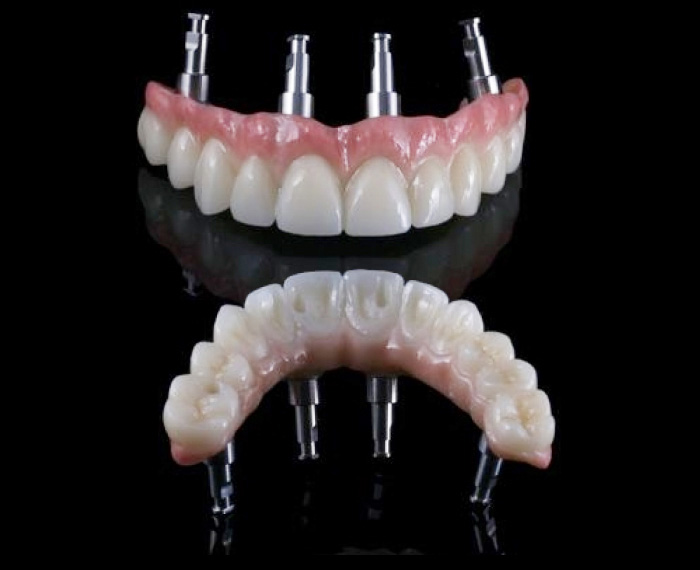
Dental Care
Dental Implants
“Dental implant” is a permanent and effective treatment method used to address dental deficiencies. A dental implant is an artificial titanium screw shaped like a tooth root that is placed into the jawbone. Once placed in an area where a tooth is missing, the implant fuses with the jawbone to create a sturdy foundation.
Dental implant treatment is commonly employed to fill gaps resulting from tooth loss or to securely attach dental prosthetics. By replacing natural teeth, implants offer an aesthetic and functional solution.
The dental implant procedure consists of the following steps:
- Evaluation and Planning: The dentist assesses the patient’s condition, examines the jawbone using X-rays or other imaging techniques, and determines the size and position of the missing tooth. Based on this evaluation, the appropriate implant size and location are planned.
- Implant Placement: Under local anesthesia, the dental implant is surgically placed into the jawbone. Over time, the implant fuses with the jawbone through a process called “osseointegration,” creating a stable bond. This process may take several months.
- Temporary Restoration: After the implant is placed, a temporary prosthesis may be attached for aesthetic and functional reasons during the healing period.
- Permanent Restoration: Once the implant has fully fused, a permanent dental restoration (prosthesis) is prepared and placed onto the implant. This marks the final step where the implant provides functional and aesthetic benefits.
Dental implant treatment can be long-lasting with proper care and hygiene, significantly improving the patient’s quality of life. However, it may not be suitable for every patient, and individual assessments by a dentist are necessary. Your dentist will work with you to determine the most appropriate treatment option for your specific needs and create a personalized plan.

